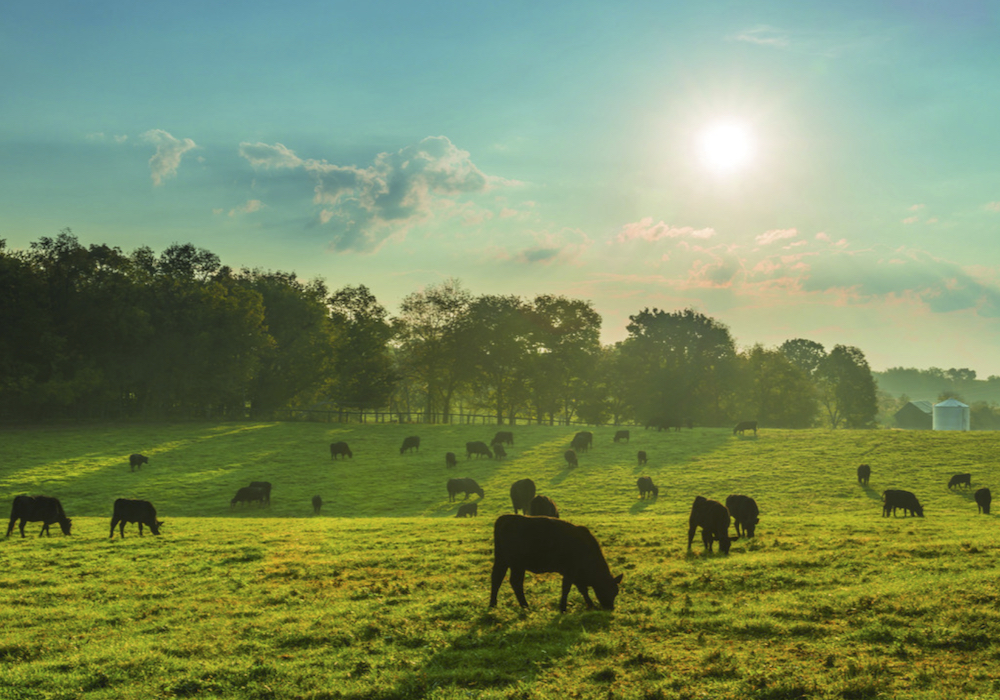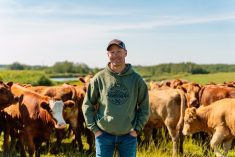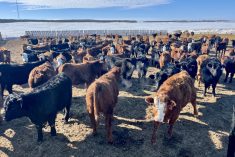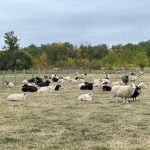All eyes are on moisture conditions this spring, as a snow drought covered a large portion of the Canadian Prairies this winter. Some of the highest (nominal) feeder prices in history last fall were combined with heifers being sent into feedlots. Feeder prices moved higher this spring to make new record highs on lower feed grain prices and anticipated tighter supplies in both Canada and the U.S. Expectations of a slow rebuilding phase will keep leverage with the cow-calf producer. Meanwhile, margin operators in the feedlot and packing sectors are being squeezed. Replacement ratios were record-wide for some classes of replacement cattle as feedlots bid to fill pen space. Beef export values reached record highs in 2023, crossing the $5 billion mark only two years after surpassing $4 billion. Most beef production is destined for the domestic and U.S. markets which have seen remarkable consumer resilience. Asian economies struggled in 2023, but are starting to see improvements, which could show up in exports in the second half of the year.
Supply Indicators
Read Also
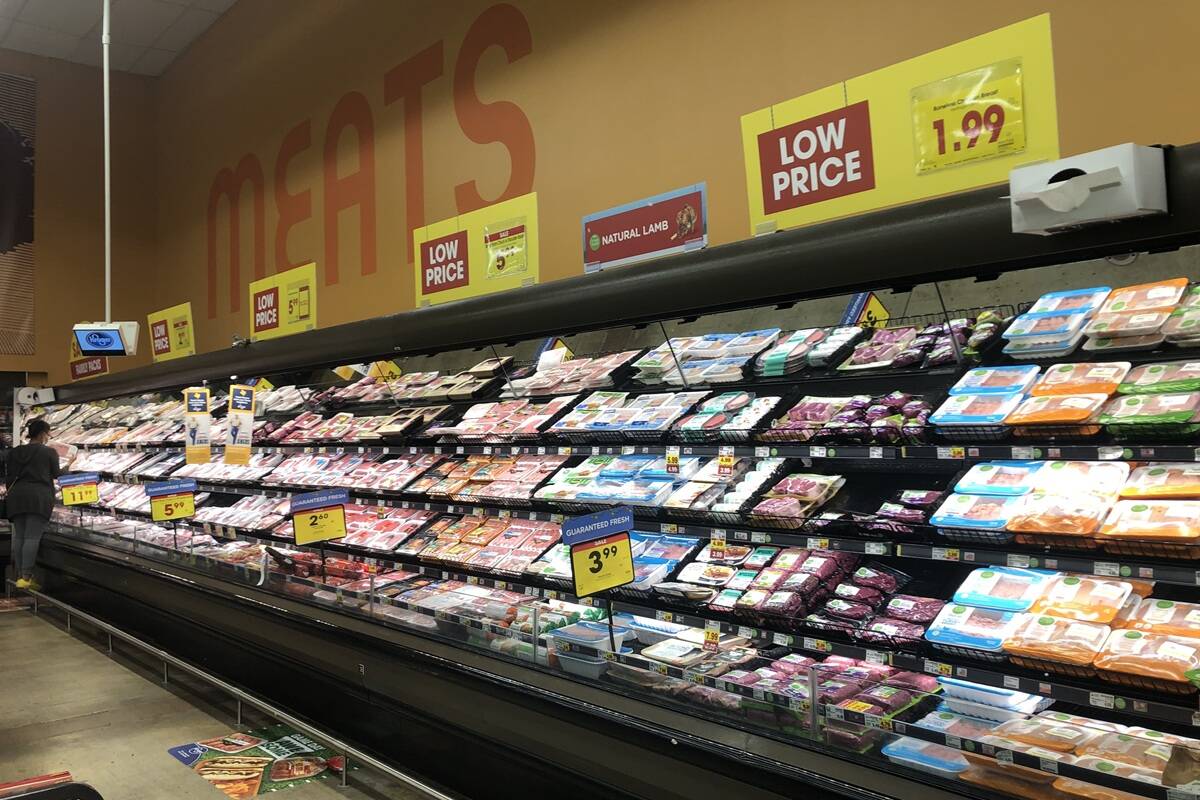
U.S beef industry faces demand risks and disease dangers
High beef prices and New World screwworm threaten beef demand and cattle health in the U.S.
Canadian inventories continue decline
Total cattle and calves on January 1, 2024, were two per cent lower than in 2023. At 11.1 million head, the cattle herd is the smallest since 1989. Drought conditions again settled over a large portion of the Prairies, discouraging herd expansion. The beef cow herd declined two per cent, to 3.46 million head. The East was down five per cent to 365,400 head, with the West down two per cent to 3.1 million head. The dairy herd was steady with last year at 963,600 head.

Beef replacement heifers were down across Canada. The largest declines were seen in Alberta (eight per cent), Ontario (five per cent) and Saskatchewan (five per cent). Smaller declines were seen in Quebec (three per cent), Manitoba (three per cent), the Atlantic provinces (two per cent) and B.C. (one per cent).
Calves under 500 lbs. declined three per cent to 3.5 million head. Nationally, the calf crop reduction was driven by the West, which was down three per cent, with a two per cent decline in the East. Calves under 500 lbs. were down four per cent in Alberta, while Ontario was steady.
Steers and heifers for slaughter (combined) at 1.97 million head were two per cent higher than in 2023. Canada was a net feeder importer for the entirety of 2023 to the tune of 159,000 head, supporting beef production.

U.S. inventories continue decline
U.S. cattle inventories as of January 1, 2024, were 87.2 million head, down two per cent from last year. Total cattle and calves are the smallest since 1951. The U.S. cattle herd is driven as much by weather as it is by market signals, and they pushed in opposite directions last year. As of the week ending March 26, 2024, only 18 per cent were in moderate to severe drought, and 22 per cent were abnormally dry1. Spring moisture will be the key to the 2024 growing season.
The U.S. beef cow herd declined three per cent to 28.2 million head, to be the smallest since 1961. Beef breeding heifers declined for the seventh consecutive year and are down one per cent from last year to 4.9 million head. The three largest states by cow numbers are Texas (4.12 million head), Oklahoma (1.92 million head) and Missouri (1.84 million head). Together, these states house nearly 30 per cent of the U.S. beef cow herd.

Steers and heifers for slaughter (combined) were down two per cent to 25 million head, with declines in both categories. Calves under 500 lbs. were down three per cent to 13.3 million head. Packers may be more dependent on fed cattle imports from Canada and Mexico to keep production lines moving in 2024.
Beef production declined in 2023
Total beef production (including live slaughter exports) totaled 3.3 billion pounds (1.5 million tonnes) in 2023, down eight per cent from 2022, and down three per cent from the five-year average. Fed production and non-fed production both declined from 2022, nine per cent and three per cent, respectively. There were some significant changes in steer carcass weights last year.In the second quarter, feedlots were considered to be “very current.” Steer carcass weights dropped below the five-year average for the second quarter, as well as the 2022 second-quarter average. However, ideal weather and ample inventories in November and December pushed steer carcass weights heavier.
Canadian federally inspected slaughter utilization was 91 per cent of capacity in 2023, slightly lower than in 2022; but remains well above the 10-year average. Currentness in Canadian feedlots between mid-April and mid-August reduced packer utilization to 86 per cent of capacity. In contrast, from the end of October to mid-December, packer utilization averaged 96 per cent of capacity, indicating some Saturday shifts were operating to keep up with supplies. U.S. feeder cattle imports have been supporting both feedlot and packer utilization, but are expected to face more competition in 2024.

For the first 11 weeks of 2024, western Canadian steer carcass weights were on average 54 lbs. heavier than last year and 69 lbs. heavier than the five-year average, pushing fed production to be one per cent higher than a year ago despite smaller slaughter numbers. Meanwhile, non-fed production was down three per cent with smaller numbers after supporting overall production last year.
Cattle-on-feed inventories tighten
Cattle-on-feed inventories on March 1 were two per cent below last year and the five-year average. Up-front supplies have gone from being ample to more normal as cattle on feed more than 120 days were 61 per cent higher than a year ago on January 1, but by March 1 declined to be only 10 per cent higher. Heifers accounted for 31 per cent of February feedlot placements, the smallest since February 2022. Improved moisture conditions in some areas this spring may be increasing optimism among cow-calf operators. However, much more will be determined by the time this comes to print.
Demand Indicators
The Canadian Retail Beef Demand Index (2000=100), at 122 in 2023 was down three per cent from 2022. While domestic consumption declined on reduced supplies, this is still at historically strong levels. The International Demand Index (2000=100) in 2023 at 146 was six per cent higher than in 2022. While domestic demand waned slightly in 2023, international demand remained strong.
Retail meat prices diverge
Retail beef prices in 2023 averaged $21/kg, seven per cent higher than in 2022. Retail chicken prices also increased, moving three per cent higher to $9.85/kg. In contrast, retail pork prices fell five per cent to $9.61/kg. However, on a deflated basis (2002=100), retail beef prices were only three per cent higher, chicken prices were steady with 2022 and pork prices were eight per cent lower, pointing to the effect that inflation had on retail prices last year. There appears to be little indication of trading down within the beef category. Ground beef averaged 44 per cent of the price of striploin steak in 2023, compared to the 2017-2022 average of 45 per cent.
Beef export values reach new highs
Canadian beef export values, at $5 billion in 2023, were seven per cent higher than in 2022 and reached a new record high only two years after climbing over the $4 billion mark. Export volumes declined two per cent to 499,000 tonnes.

Export volumes increased to the U.S. (four per cent), Mexico (22 per cent), and Hong Kong and Macau (18 per cent). However, volumes declined to Japan (33 per cent), South Korea (25 per cent), Southeast Asia (25 per cent), Taiwan (13 per cent) and MENA (26 per cent). There were no exports to China or the U.K. Strong exchange rates in the U.S. and Mexico supported exports to those countries, while ample cold storage stocks, weak demand and weak currencies discouraged exports to Asian markets.
Canadian imports in 2023 were up 11 per cent in volume and up 12 per cent in value from 2022. Import volumes increased from Australia (96 per cent), New Zealand (56 per cent), Uruguay (73 per cent), Mexico (18 per cent), Brazil (21 per cent) and Argentina (52 per cent). Volumes declined from the EU (17 per cent) and the U.K. (56 per cent). Import volumes from the U.S. were steady with last year. Over
the last six weeks, lean 85 per cent trim prices in the U.S. averaged a $38/cwt premium to Australian-New Zealand 85 per cent lean trim. Sustained North American premiums may encourage additional lean trim imports from Oceania.
Fed Cattle Prices Recover
Slow start for Alberta fed cattle
Alberta and Ontario fed steers responded in a nearly identical manner to market signals in 2023. Alberta fed steers averaged $225/cwt, with Ontario averaging $228/cwt. Both regions peaked in June, establishing new all-time highs, before moderating in the second half of the year. Alberta fed steers softened three per cent between the third and fourth quarters of 2023. Ontario fed steers fared somewhat better, softening only one per cent.
Alberta fed steers moved higher in March 2024 after a lacklustre fourth quarter, up seven per cent from early January to mid-March to $233/cwt. Ontario fed steers followed suit, also climbing seven per cent to $239/cwt by mid-March.

The Alberta-to-Nebraska cash basis averaged -$14/cwt in the fourth quarter of 2023, $12/cwt stronger than the fourth quarter of 2022, but $5/cwt weaker than the five-year average for the fourth quarter. Looking back to 1986, the Alberta cash basis tends to strengthen moving through the fourth quarter, although a $14/cwt or greater improvement between October and December has only occurred one other time (2003). The Ontario-to-Nebraska cash basis averaged -$9/cwt in the fourth quarter and is also $14/cwt stronger than last year.
The first quarter of 2024 saw the Alberta cash basis weaken considerably compared to the fourth quarter of 2023, as supplies in the U.S. tightened faster than in Western Canada. At -$20/cwt, the Alberta cash basis begins another year historically weak with expectations of strengthening in the second quarter. The Ontario cash basis only weakened a very small $1/cwt to -$10/cwt.
Cow prices pushing new highs
Alberta D2 cows have moved along historical trends over the last year, seasonally declining in the fourth quarter of 2023 and rebounding higher in the first quarter of 2024. Alberta D2 cows averaged $143/cwt in the first quarter, 30 per cent higher than last year, with new record highs established in March.
Ontario D2 cows have also followed very closely with seasonal trends, softening in the fourth quarter and strengthening as a new year begins. Ontario D2 cows, averaging $140-plus/cwt in the first quarter, were 25 per cent higher than last year, and are on track to set new all- time highs this spring.

Since March 2023, U.S. utility cows have been priced at an $8/cwt premium to Ontario D2 cows and have kept pace with Alberta D2 cows. U.S. utility cows are also anticipated to establish new all-time highs in March 2024.
New Crop Feed Grains Under Pressure
New crop feed grain prices continue to ease lower. First- quarter 2024 Lethbridge barley prices were averaging near $300/tonne, around 31 per cent lower than the first quarter of 2023 and 11 per cent lower than the five-year average. New crop Ontario corn has been slipping steadily lower since the beginning of the 2023 harvest season, averaging $210/tonne in the first quarter of 2024, 33 per cent lower than last year and 23 per cent lower than the five-year average. Omaha corn dropped below US$5/bu. last September and has not been able to recover. First quarter 2024 Omaha corn averaged US$4.43/bu., 36 per cent lower than in 2023 and 15 per cent lower than the five-year average. Lower feed grain prices have encouraged feedlot operators to put additional weight on their cattle and supported feeder cattle prices.

The March “Outlook for Principal Field Crops” released by Statistics Canada estimates barley production to be seven per cent higher for the 2024-25 crop year at 9.5 million tonnes, exports steady with last year at 2.75 million tonnes, imports down 63 per cent to 30,000 tonnes, total domestic use nine per cent higher at 6.5 million tonnes, and ending stocks 30 per cent higher at 1.3 million tonnes. The stocks-to-use ratio is estimated at 20 per cent, one percentage point higher than last year, and the highest since 2017. Corn production in 2024, at 14.9 million tonnes, is projected to be the second highest on record going back to 1982, and only one per cent lower than last year’s record. Exports are estimated to be down 11 per cent to 1.7 million tonnes, imports down 20 per cent to 2.2 million tonnes, domestic use down three per cent to 15.1 million tonnes, ending stocks up 16 per cent to 2.2 million tonnes, and stocks-to-use at 15 per cent, three percentage points higher than last year and in line with the five-year average.
Tailwinds Push Feeder Prices
Alberta feeder cattle saw a general strengthening tone from the fourth quarter of 2023 to the first quarter of 2024. Averaging north of $410/cwt in the first quarter, Alberta 550-lb. steers, destined for summer grass, were 32 per cent higher than last year and 69 per cent higher than the five- year average. Alberta 850-lb. steers have also strengthened in the first quarter, passing the $310/cwt mark, 27 per cent higher than last year and 61 per cent higher than the five- year average.

Averaging near $370/cwt in the first quarter of 2024, Ontario 550-lb. steers were 28 per cent higher than last year and 62 per cent higher than the five-year average. Ontario 850-lb. steers averaged just above $315/cwt in the first quarter of 2024, also strengthening 28 per cent from last year and 62 per cent compared to the five-year average.
Replacement ratios
Replacement ratios determine the percentage of a sold animal that is required to purchase a replacement animal. Lower ratios mean fewer dollars are required; higher ratios mean more dollars are required. Feedlot margins appear to be squeezed with record-high feeder prices pushing up breakevens throughout 2024. Competition for feeders is strong with interest in filling pens.
The fed market appears to have underperformed relative to the feeder market, as price ratios widened for all classes of replacements in both regions in the third quarter of 2023 and the first quarter of 2024. In the West, first-quarter replacement ratios were the widest since 2015. Alberta 700- to 800-lb. steers were the widest on record going back to 2008.


